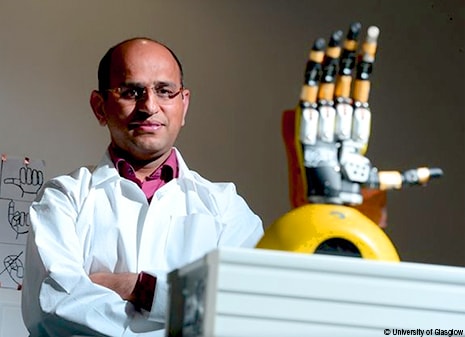Researchers have begun development of an electronic skin to enable users to feel through sensory receptors.
Orange County, CA - October 25th 2017 - Researchers at the University of Glasgow’s School of Engineering have begun development of an electronic skin that will enable the user to feel items similarly to regular skin through natural sensory receptors. The engineers have previously developed an ‘electronic skin’ covering for prosthetic hands made from graphene, but now have expanded its use through it’s remarkable physical properties to accept solar power for functionality.
In a news release published in March, the university states the research was conducted with the aim of producing advanced prosthetic limbs "capable of returning the sense of touch to amputees."
Graphene is a highly flexible form of graphite which, despite being just a single atom thick, is stronger than steel, electrically conductive, and transparent. The optically transparency allows about 98 percent of the light striking the surface to pass directly through it, making it ideal for gathering the sun’s energy to generate power.

In his research paper published in the journal Advanced Functional Materials, Dr. Ravinder Dahiya and colleagues from his Bendable Electronics and Sensing Technologies (BEST) group explain how they incorporated power-generating photovoltaic cells into their electronic skin for the first time.
In detailing the work his group has accomplished, Dr. Dahiya said, “My colleagues and I have already made significant steps in creating prosthetic prototypes [integrating] synthetic skin [that] are capable of making very sensitive pressure measurements. [These measurements allow] the prosthetic hand [to perform] challenging tasks like properly gripping soft materials, which other prosthetics can struggle with.” He goes on to explain that their research team has begun work with 3D printers, experimenting with various printing strategies for production of affordable sensitive prosthetic limbs.
Dr. Dahiya also hopes to expand this work into the realm of robotics. He is optimistic that touch receptors with added sensitivity will help create robots with better sensory awareness to improve decision making. The new skin requires 20 nanowatts of power per square centimeter, which is easily met by the cells currently available on the market. Current energy generated by the skin’s cells cannot be stored however the team is looking into techniques to divert unused energy into batteries, allowing the energy to be kept until needed.
The team has only scratched the surface of possibilities for this technology. "The next step for us is to further develop the power-generation technology which underpins this research and use it to power the motors which drive the prosthetic hand itself," Dahiya said. "This could allow the creation of an entirely energy-autonomous prosthetic limb."
Contact Ampronix:

Email: info@ampronix.com
International Sales: +1 949-273-8000
Domestic Sales: 1800-400-7972 for US and Canada
Follow Us:
Share This Article:
View our Product Catalog Online Here
About Ampronix
Ampronix is a renowned authorized master distributor of the medical industry's top brands as well as a world class manufacturer of innovative technology. Since 1982, Ampronix has been dedicated to meeting the growing needs of the medical community with its extensive product knowledge, outstanding service, and state-of-the-art repair facility. Ampronix prides itself on its ability to offer tailored, one-stop solutions at a faster and more cost effective rate than other manufacturers. Ampronix is an ISO & ANSI/ESD certified facility. To learn more go here.

Researchers have begun development of an electronic skin to enable users to feel through sensory receptors. Orange County, CA – October 25th 2017 – Researchers at the University of Glasgow’s School of Engineering have begun development of an electronic skin that will enable the user to feel items similarly to regular skin through natural sensory receptors. The […]



